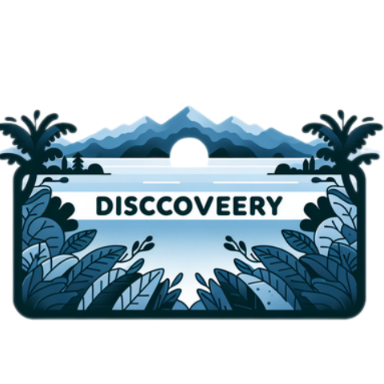Adventure travel is about more than just seeing new places; it’s about pushing your boundaries, experiencing unique cultures, and engaging in thrilling activities that leave a lasting impact. As we head into 2024, planning your adventure trip requires careful consideration to ensure a safe, memorable, and enjoyable experience. This guide will walk you through essential steps and tips for planning your next adventure travel trip.
1. Define Your Adventure Goals

Identify Your Interests
Before diving into the planning process, think about what excites you. Are you drawn to mountain trekking, scuba diving, wildlife safaris, or cultural explorations? Understanding your interests will help you select a destination and activities that align with your adventure goals.
Set Objectives
Determine what you hope to achieve from your trip. Whether it’s overcoming a personal challenge, experiencing a new culture, or simply seeking thrills, having clear objectives will guide your planning and help you stay focused.
2. Choose Your Destination
Research Destinations
Explore various destinations that offer the type of adventure you’re seeking. For example:
- Hiking and Trekking: Consider destinations like Nepal for Everest Base Camp, Patagonia for the Torres del Paine trek, or the Swiss Alps for stunning mountain trails.
- Scuba Diving: The Great Barrier Reef in Australia, the Blue Hole in Belize, and the Raja Ampat Islands in Indonesia are renowned for their underwater beauty.
- Wildlife Safaris: Africa offers incredible safari experiences in countries like Kenya, Tanzania, and South Africa, where you can witness the Big Five and other exotic wildlife.
Consider the Climate
Factor in the climate and season of your chosen destination. Research the best times to visit to avoid extreme weather conditions and ensure optimal conditions for your activities.
3. Plan Your Itinerary
Outline Key Activities
Create a rough itinerary that includes key activities and landmarks you want to visit. Be sure to balance adventure activities with rest days to avoid burnout. For example, if you’re trekking through a national park, plan for rest days to acclimate and explore nearby areas.
Book Accommodations
Select accommodations that suit your adventure style. Options range from camping in remote areas to staying in luxury lodges or eco-friendly resorts. Make reservations well in advance, especially for popular destinations.
4. Prepare for Physical Challenges
Get in Shape
Adventure travel often involves physical exertion, so it’s essential to prepare your body. Incorporate exercise routines that mimic the activities you’ll be doing, such as hiking, climbing, or swimming. Consult with a fitness trainer if needed.
Acclimate to Altitude
If your adventure involves high altitudes, such as trekking in the Himalayas, give yourself time to acclimate. Arrive a few days early and take it slow to prevent altitude sickness.
5. Pack Smart and Light

Essential Gear
Pack gear that matches your activities and the environment. Common essentials include:
- Clothing: Moisture-wicking layers, waterproof jackets, and sturdy hiking boots.
- Camping Equipment: Sleeping bags, tents, and cooking gear if you’re camping.
- Safety Gear: Helmets, harnesses, and first aid kits for specific activities like climbing or diving.
Travel Light
Avoid overpacking by selecting versatile items and focusing on essentials. Packing light will make your travels more manageable and enjoyable.
6. Ensure Safety and Health
Travel Insurance
Purchase comprehensive travel insurance that covers adventure activities, medical emergencies, and trip cancellations. Verify that your policy includes coverage for the specific activities you plan to undertake.
Health Precautions
Consult with a travel health clinic to receive vaccinations and medications relevant to your destination. Carry a first aid kit and any personal medications you may need.
Emergency Plans
Know the emergency contact numbers and procedures for your destination. Register with your embassy or consulate and inform them of your travel plans.
7. Respect Local Cultures
Learn Basic Phrases
Learn a few basic phrases in the local language to enhance communication and show respect for the local culture. Even a simple greeting can go a long way in building rapport.
Follow Local Customs
Respect local traditions, dress codes, and customs. Research cultural norms to avoid unintentional offenses and show appreciation for the local way of life.
8. Document and Share Your Experience
Keep a Travel Journal
Document your adventures through a travel journal or blog. Recording your experiences will help you reflect on your trip and share your journey with others.
Capture Memories
Take photos and videos to capture memorable moments. However, be mindful of local regulations and respect privacy when photographing people.
9. Review and Reflect
Post-Trip Reflection
After your adventure, take time to reflect on your experiences. Consider what went well, what could be improved, and how the trip impacted you personally.
Share Your Insights
Share your experiences with friends, family, or through travel forums and social media. Your insights and tips can help other adventure travelers plan their own journeys.
10. Stay Flexible

Adapt to Changes
Adventure travel often involves unexpected changes and challenges. Stay flexible and open to adjusting your plans as needed. Embrace the adventure and enjoy the journey, even when things don’t go as planned.
Conclusion
Planning an adventure travel trip in 2024 involves thoughtful preparation, research, and a willingness to embrace new experiences. By defining your adventure goals, choosing the right destination, preparing physically, and respecting local cultures, you can ensure a memorable and fulfilling journey. Pack smart, stay safe, and get ready to embark on an adventure that will create lasting memories and inspire future travels. Happy adventuring!




